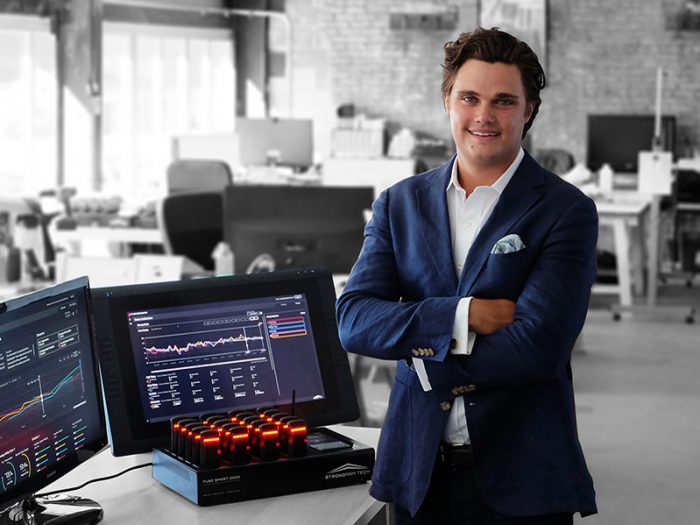How One CEO Is Protecting Industrial Athletes with Ergonomics

It’s no secret there are some dangerous jobs out there. Whether you’re hanging off the side of a building as a high-rise window washer or driving for Uber, risks are everywhere. But that doesn’t mean they should follow you when your shift is up.
Despite larger technology surges with every passing decade, the manual workforce is still a prominent part of today’s economy. Because of that same technology, the pressure and resources to protect the workforce is as prominent as ever in workers’ compensation.
Injuries affected more than 3% of manufacturing workers in 2015, according to the Bureau of Labor Statistics.
While there are other, more prominent consequences such as chronic pain and carpal tunnel syndrome, too many American workers die on job sites every year — over 5,200 were killed by job site accidents in 2018.
A Father’s Legacy, A Son’s Mission
Sean Petterson is the son of a manual laborer who died on the job. He is also the chief executive officer and co-founder of StrongArm Technologies, a safety science company created to protect manual laborers, or “Industrial Athletes,” through wearable technologies.
“That experience is the inspiration for what we’re doing,” said Petterson of his family tragedy’s effect on the trajectory of his company. “The majority of the injuries that happen in the workplace every day can be avoided if people are more aware.”
Petterson and his colleagues at StrongArm have made it their mission to make industrial athletes aware of the risk their jobs have on their bodies and turn that awareness into injury prevention, ultimately preventing other workers from suffering the same fate as his father.
A New Approach
From an organizational standpoint, it can sometimes be difficult for organizations to recognize where their losses are coming from if the ones collecting the data are not physically in the field.
To put it into perspective, in the United States alone, there are 2.7 million miles of pipeline that fuel organizations and businesses. While we are constantly aware of the cost of oil prices and things that directly affect consumerism, the average person knows little about what it takes to maintain those pipelines and the people who are tasked with their upkeep. Who is focused on keeping them safe?
“Beyond my personal story, our company is also driven by the countless other stories we hear in the field,” Petterson explained.
Petterson is not just focused on getting more workers home to their children at night but also improving the quality of their lives overall. It’s no secret that chronic pain plagues workers, even those in stagnant desk jobs (83 million days of work are lost per year due to back pain), so shouldn’t more be done to help those that have no choice but to be subjected to physical exertion and repetition?
Petterson noted, “There are teams of people drafting up designs for the newest basketball shoes, but there’s virtually nobody drafting up products to protect the Industrial Athletes.”
He took it upon himself to change that.
The FUSE Platform
Beginning with exoskeletons that properly align the body to reduce strains, StrongArm’s products quickly began to evolve.
“As we deployed our original exoskeletons, we found it’s not a lack of care, just lack of understanding of the problem that prevented their widespread adoption and the adoption of nearly every other form of safety tech hardware”.
So they took it a step further. The result was the FUSE Platform. Workers using the platform are equipped with wearable technology, the platform collects data based on ergonomic and environmental risk factors and gives real-time responses and feedback to workers. For example, if someone is lifting something wrong, the device will alert its wearer with a text message and then coach them through improving their form.
All of the data across the organization is analyzed via the platform and produces a safety score. The score tracks trends and gives data-driven evidence and proof of proper safety measures. Users report injury reduction of up to 30%.
“We’ve assembled a team of individuals that show what it means to fall in love with the problem and not fall in love with the solution.”
Despite the challenges presented by a changing workforce, Petterson wants to address the well-being of Industrial Athletes beyond safety.
“It’s not just about helping workers, people like my father, be safer and go home to their kids at night,” he explained.
“It’s the fact that workers can be more present in their lives if they’re happier — if they’re not in pain. We enable people to play catch, go to the game, and not ice their backs all the time.”
Thanks to wearable technologies such as FUSE, workers are closer to living pain-free lives. That calls for celebration beyond the job site.
Risk & Insurance is now an affiliate of The Institutes, which owns the National Ergonomics Conference & ErgoExpo. &










